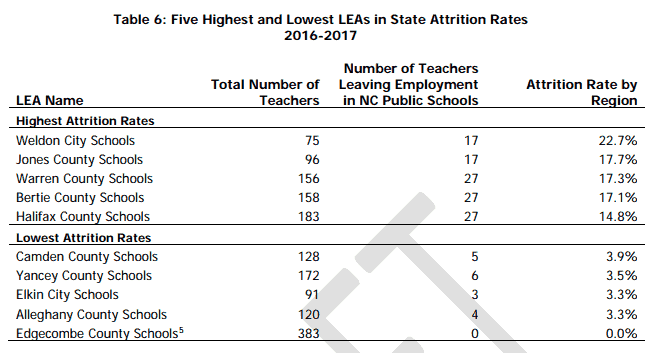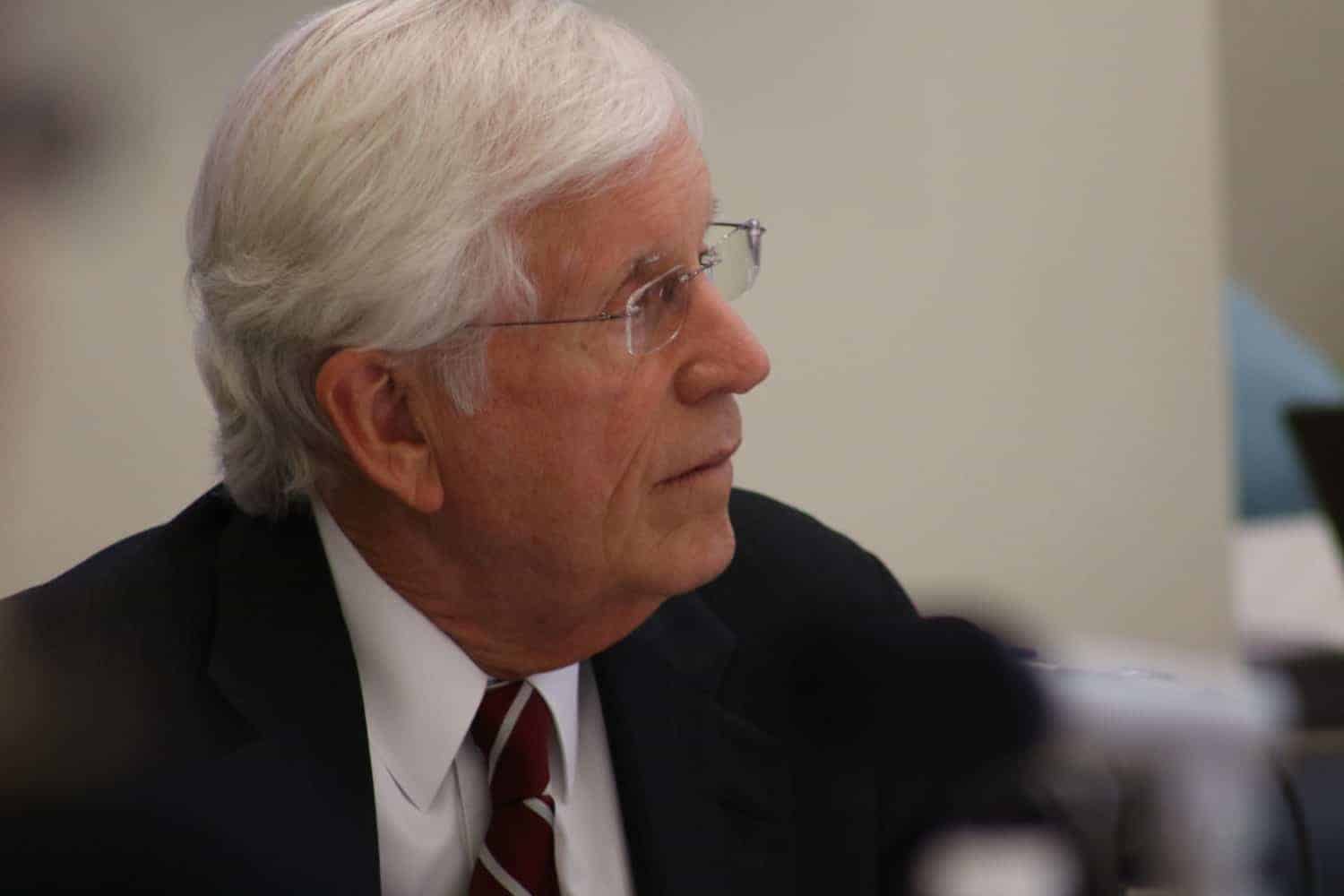Teacher attrition dropped slightly from 2016 to 2017, according to a draft report from the Department of Public Instruction discussed in the first State Board of Education meeting of 2018. The rate at which North Carolina teachers leave the state fell from 9.04 percent in 2016 to 8.65 percent in 2017.
However, the percentage of teachers who moved between districts within the state, known as “mobility,” slightly increased from 4.36 to 4.8 percent from 2016 to 2017. The “LEA attrition rate,” which combines the effect of teachers leaving the state and teachers moving within the state, increased slightly — from 13.4 to 13.45 percent from 2016 to 2017.
DPI’s Director of District Human Resources Tom Tomberlin addressed the Board on Wednesday and said there were not many big changes in the data from the previous report.
“There isn’t a whole lot that’s particularly earth shattering about this report,” Tomberlin said. His team changed the way they evaluated what subject areas struggle to attract and keep teachers the most. Instead of surveying districts, the report looks at vacancy reports from districts at the first and 40th days of the school year. Tomberlin said the vacancy rate, at 1.5 percent, is low when compared with other industries. However, he said those 1,500 vacancies are affecting tends of thousands of children.
“We know that there’s a substantial number of children who are continuing to not have a full-time certified teacher in the classroom at the 40th day,” he said.
Board member Wayne McDevitt said he is interested in analyzing and solving the supply side of the teaching profession.
“At some point, I would love to see this state engage in a conversation that says, ‘Here’s our five or 10 year plan to make the teaching profession in North Carolina the best in America,'” McDevitt said. “And then a lot of this data will kind of go away.”
Teachers in their first three years in the profession left the state at a higher rate (12.21 percent) than their more experienced peers (7.57 percent). Lateral entry teachers, who enter the profession from backgrounds other than education, leave the state at a higher-than-average rate: 15.36 percent. Teachers who stay in the profession and in the state have higher EVAAS (Education Value-Added Assessment System) growth rates than those who leave, when taking experience into account.
“We’re still losing a substantial number of effective and highly-effective teachers in the attrition battle,” Tomberlin said.
The majority (53.6 percent) of teachers who left the state did so due to “personal reasons,” which include situations like childcare needs, deciding to teach in another state, family relocation, and career changes. Of the teachers who left the state, 23.4 percent did so for reasons “beyond control of LEA,” like retirement or death.
The turnover rate in 2015 was 14.5 percent but was calculated differently than the rate starting in 2016 and can not be directly compared with the two most recent sets of data.
The following table from the report shows the districts with the highest and lowest attrition rates. Edgecombe County Schools, according to the footnote, did report teachers who left the state after the reporting period.

Bobbie Cavnar, the 2016 Teacher of the Year, expressed concern about attrition in districts that have the highest need for effective teachers. Tomberlin said retaining teachers in low-performing schools remains a struggle.
“That trend continues,” Tomberlin said. “And so, to Mr. McDevitt’s point, supply and demand is one issue, but there’s also the prevailing issue of equity across the state. Just because we have more teachers doesn’t mean those teachers will go to the areas that have a dearth of effective teachers. And that’s one of the really difficult problems that we have to solve in the state, is how do we get highly-effective teachers to go to and remain in these schools districts that are continually low-performing?”
Snow day
The second day of the State Board was sparse and quick thanks to the sprinkling of snow that hit downtown Raleigh overnight. Only a handful of board members made it into the meeting, with the bulk of the conversation happening via conference call.
Due to the sparse attendance, the Board quickly ran through its action items, delaying discussion and presentations for another month.
The Board approved a slew of items, including the Innovative School District Report to the Joint Legislative Education Oversight Committee.
ISD Superintendent Eric Hall met with the Board Wednesday to update them on his progress in evaluating the two candidates to take over the Robeson County School, Southside-Ashpole Elementary, chosen as the inaugural ISD school. The two organizations are Charlotte-based Achievement for All Children and Michigan’s The Romine Group.
Robeson County School Board has not officially voted on whether to allow the school to join the ISD. The county’s only other option is to close it. The county school board plans to vote next week.
On Friday, there will be a forum in Robeson County where concerned citizens can hear from the two candidates vying to operate the school. Weather permitting, the forum will be held at the New Hope United Methodist Church on 210 Martin Luther King Street in Rowland from 1:30-3:30pm.
The Board also approved two proposed restart schools: Willis Hare Elementary in Northampton County, and A. H. Snipes Academy of Arts and Design and R. Freeman School of Engineering in New Hanover County.
The Board also approved restart applications from schools in Johnston County and Vance County. In Vance County, Northern Vance High School was approved. And in Johnston County, the following school applications were approved:
- Benson Elementary
- West Smithfield Elementary
- Selma Middle
- Benson Middle
Durham Public Schools also received approval to rescind 12 of its proposed restart schools. They are:
- Bethesda Elementary
- Brogden Middle
- Eno Valley Elementary
- Shepard Middle
- Lowes Grove Middle
- Lucas Middle
- Fayetteville Street Elementary
- E. K. Powe elementary
- Githens Middle
- Southern School of Energy and Sustainability
- Sandy Ridge Elementary
- Y.E. Smith Elementary
New Durham Superintendent Pascal Mubenga has said that operating fewer schools with charter-like flexibility would be more financially feasible.




